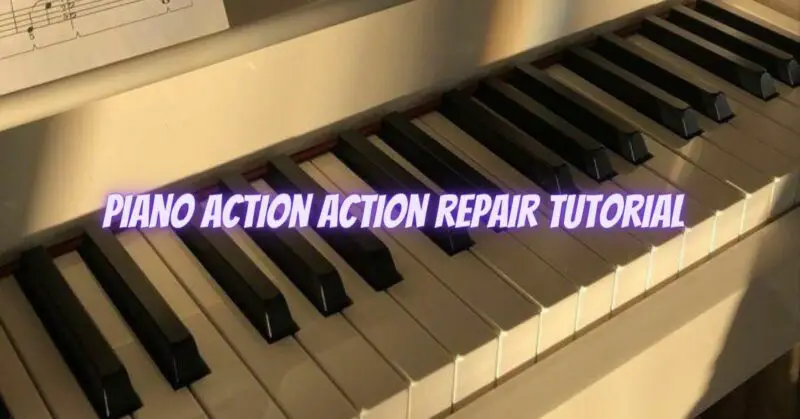Repairing a piano action requires careful attention and specialized knowledge. If you have prior experience with piano maintenance and repair, you may attempt minor adjustments. However, for more complex issues, it is best to consult a professional piano technician. Here’s a general overview of some basic piano action repair procedures:
- Cleaning and Inspection:
- Start by thoroughly cleaning the action to remove dust and debris. Inspect the action components for wear, damage, or misalignment.
- Fixing Sticking Keys:
- Identify the cause of sticking keys, which can be due to friction or misalignment. Lubricate friction points with a suitable action lubricant. If keys still stick, adjust the keybed or correct misalignments.
- Regulating Key Dip and Let-Off:
- Measure the key dip (the distance a key travels when pressed) and adjust it using key leveling screws or buttons. Check and regulate the let-off point, ensuring proper escapement for each key.
- Hammer Alignment and Voicing:
- Verify that the hammers strike the strings squarely and evenly. Adjust the hammer alignment using flanges and voicing needles to shape the hammers for an even tone.
- Regulating Key Height and Leveling:
- Ensure that all keys are level and of equal height across the keyboard. Adjust the balance rail pins and balance rail punchings to achieve proper leveling.
- Replacing Worn Action Parts:
- Identify any worn or damaged action parts, such as springs, flanges, or shanks, and replace them with suitable replacements.
- Repairing Damper System:
- Check the damper system for proper functioning. Address any issues with dampers not lifting or falling correctly, and replace worn damper felts if necessary.
- Regulating Repetition Lever:
- Ensure the repetition lever is correctly aligned to allow for rapid repetition of notes.
- Aligning Hammer Knuckles and Butt Felts:
- Align the hammer knuckles and replace worn butt felts to prevent excessive hammer travel.
- Inspecting and Adjusting Bracing and Bridle Straps:
- Verify that the bracing and bridle straps are properly aligned and functioning to maintain the integrity of the action.
- Reassembling and Testing:
- After making adjustments and repairs, reassemble the action and test the piano thoroughly to ensure all keys respond uniformly and produce a balanced sound.
Please note that piano action repair can be complex and requires attention to detail. If you are uncertain or encounter significant issues during the process, it is highly recommended to seek the expertise of a qualified piano technician. They have the experience and knowledge to diagnose and address various action-related problems effectively and ensure that your piano performs optimally for years to come. Always prioritize the proper care and maintenance of your piano to preserve its value and enjoyment.

